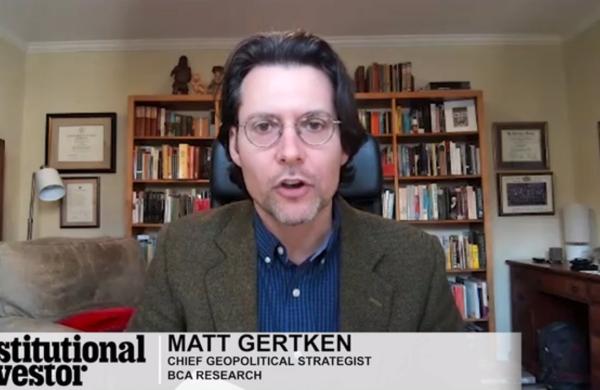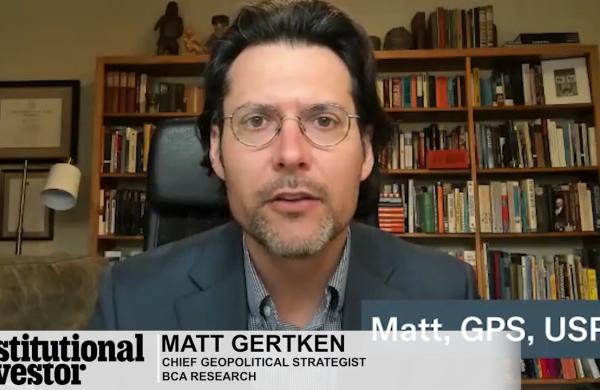The luster of the BRICs has faded in the past few years but seems likely to return, to at least a small degree, in 2012. After dizzying outperformance between 2005 and 2007, these four large equity markets – Brazil, Russia, India, and China – lagged emerging market stocks as a whole during the subsequent four years. High valuations and country-specific concerns explain much of that underperformance, especially in the 2008-10 period. Last year, though, a common monetary policy and growth dynamic hurt China, India, and Brazil. With this factor now reversing, the BRICs will likely outperform overall emerging market equities in 2012. This story worked well in January and February, but the BRICs have stumbled thus far in March, primarily on doubts about growth prospects in China and India. Continued monetary policy easing and stabilizing growth will likely pave the way for renewed BRIC outperformance in coming months – or perhaps “BIC” outperformance, as Russia is following a separate dynamic and we will leave it to one side in this discussion. China, India, and Brazil experienced relatively brief growth downturns during the global recession and bounced back strongly from these slumps. By early 2010, overheating pressures had become apparent. Inflation was rising in each of the three countries. As a result, central banks began tightening monetary policy through a combination of interest rate increases and other measures (such as hikes in reserve requirements). By mid-2011, policy interest rates in the BRICs had climbed nearly 200bp from their early-2010 trough, a far more aggressive tightening cycle than occurred elsewhere in the EM world. This effort began producing results in early 2011 and the full force of the tightening was evident by the second half of last year. Chinese GDP growth dropped below its roughly 9% trend in the second quarter of 2011 and appears to have remained there since; India’s growth slowed to 6.1% Y/Y in 11Q4, well below its own trend rate and the weakest figure since 2008; and Brazilian GDP growth turned slightly negative in quarter-on-quarter terms in the third quarter and remained sluggish (at 1.3% Q/Q, SAAR) in the fourth quarter of last year. This across-the-board below-trend growth helped touch off the slump in relative performance by emerging market equities as a whole, compared with the S&P 500, and the underperformance of the BRICs within the wider group.
The success of the earlier monetary tightening in squeezing inflation has become apparent in recent months, especially in China. CPI inflation there fell to 3.2% Y/Y in February, below the apparent 4% ceiling of the authorities’ comfort zone, and is running at just 0.5% 3M/3M, SAAR. Inflation has dropped to a lesser but still convincing extent in Brazil and India. As a result, monetary policy in all three countries has gone into reverse. Brazil has acted most aggressively, with 275bp of interest rate cuts since July 2011. Neither China nor India has lowered policy interest rates yet, but China has eased reserve requirements twice since late last year and appears to be guiding state-owned banks toward greater lending. India also cut reserve requirements recently, and a rate cut seems likely in the first half of 2012.
With the usual lags, easier monetary policy will likely produce faster growth as 2012 unfolds. In Brazil’s case, growth appears to have bottomed out in 11Q3 and will likely reaccelerate gradually. China is suffering not only from monetary tightening but also foreign weakness and deceleration in its previously booming property sector. With the rest of the global economy doing better and policy easing now underway, it too should experience a growth rebound toward the 9% mark around mid-year. India is a bit behind the other two, and political developments may put downward pressure on local business and consumer confidence, but a gradual reversal of the Reserve Bank of India’s 2010-11 tightening should begin pulling up growth in the second half of 2012.
Elsewhere in EM, a much milder tightening cycle in 2010-11 is yielding to a modest easing process at the moment. While a few central banks have acted, the aggregate policy interest rate for EM countries outside of the BRICs has fallen by less than 20bp since the middle of last year. A similar pattern will likely play out in growth – a gentler slowdown will be followed by a more moderate reacceleration. With their more dramatic swing, the BRICs will likely lead the way for emerging market equities this year. In 2011, emerging market stocks lagged the S&P 500 by about 20%. So far this year, they have outperformed by roughly 3%. Monetary easing and faster growth should allow for significant further relative gains from here, with the BRICs – or BICs – in the vanguard.
Opinions and estimates constitute our judgment and are subject to change without notice. Past performance is not indicative of future results. The material is not intended as an offer or solicitation for the purchase or sale of any financial instrument. J.P. Morgan Asset Management is the brand for the asset management business of JPMorgan Chase & Co. and its affiliates worldwide.




